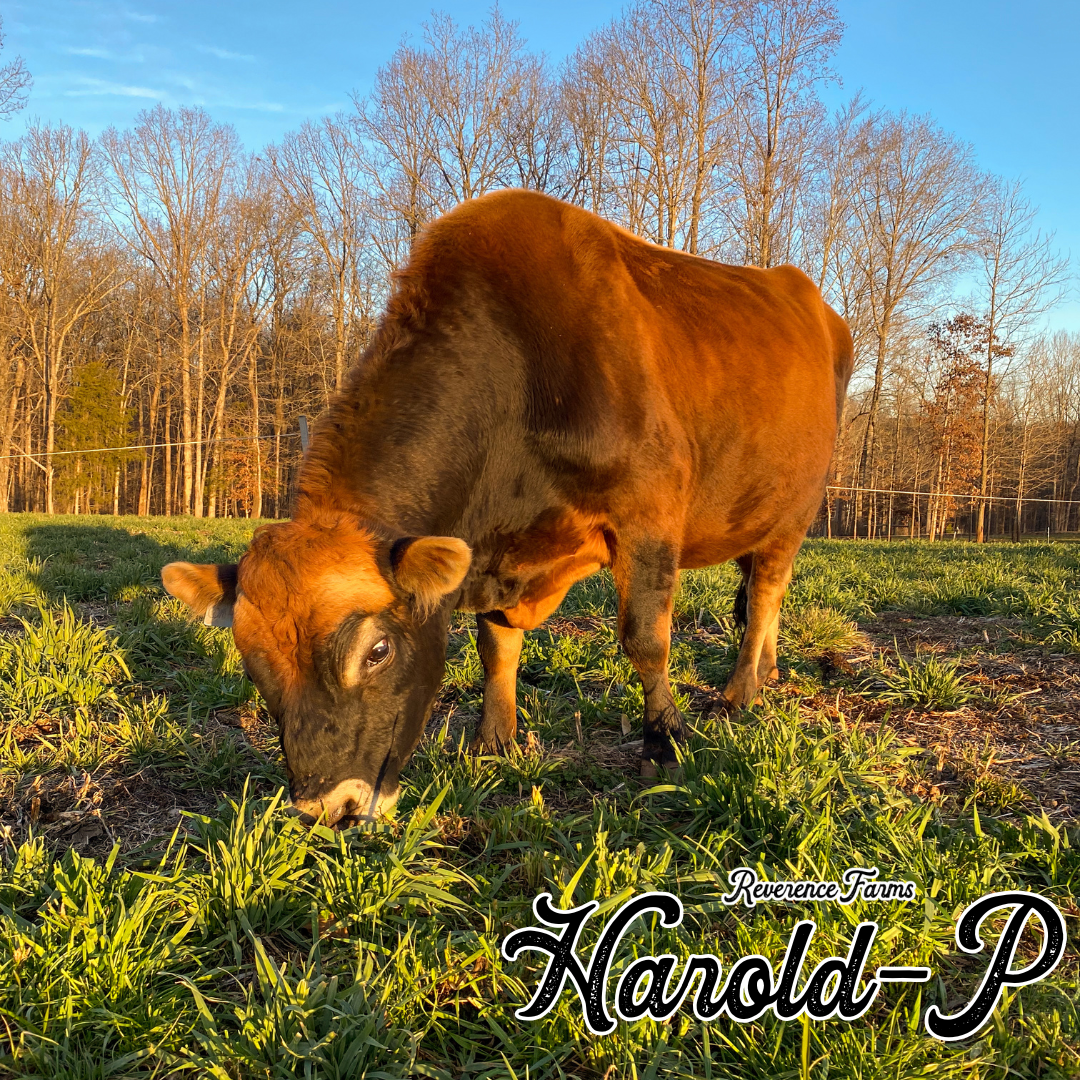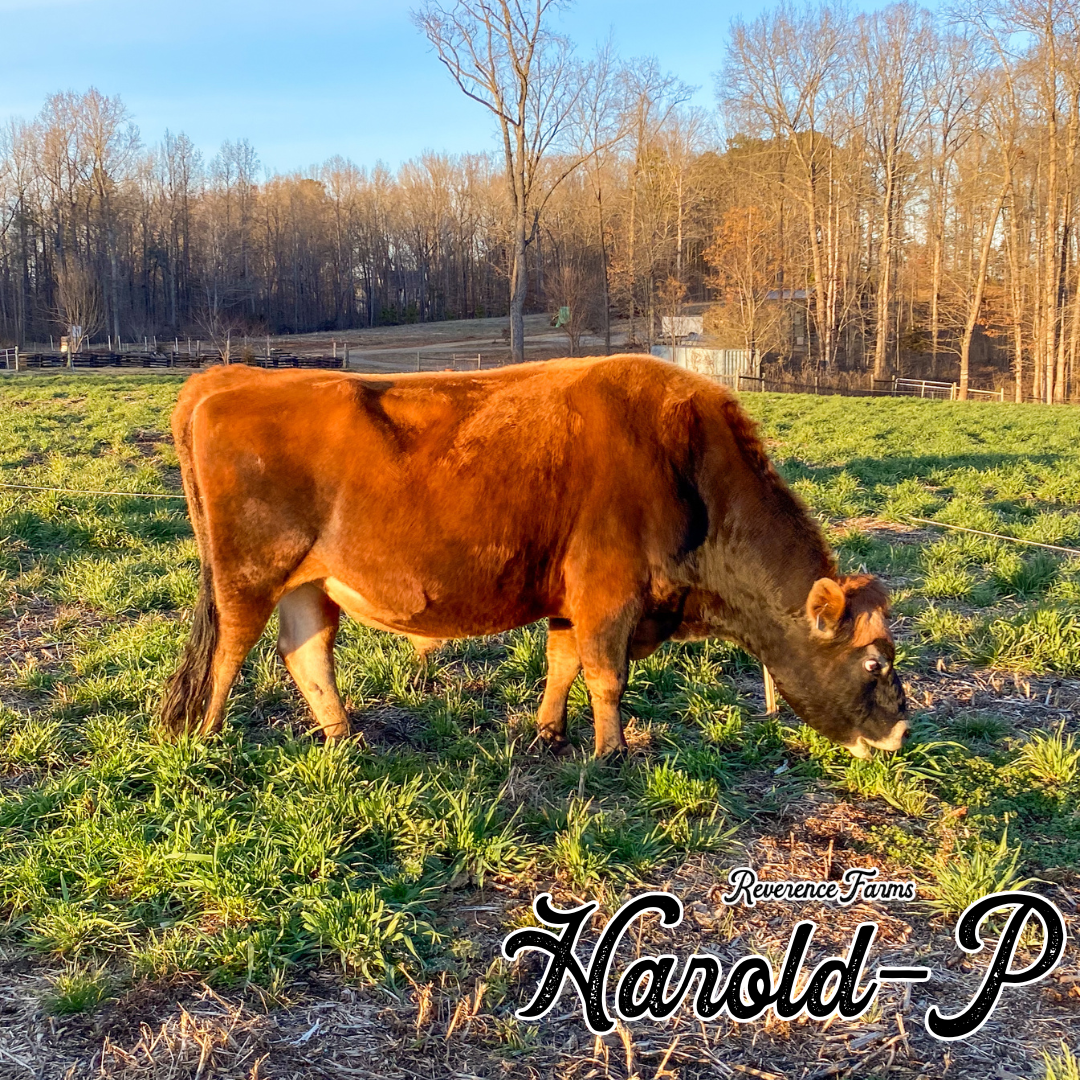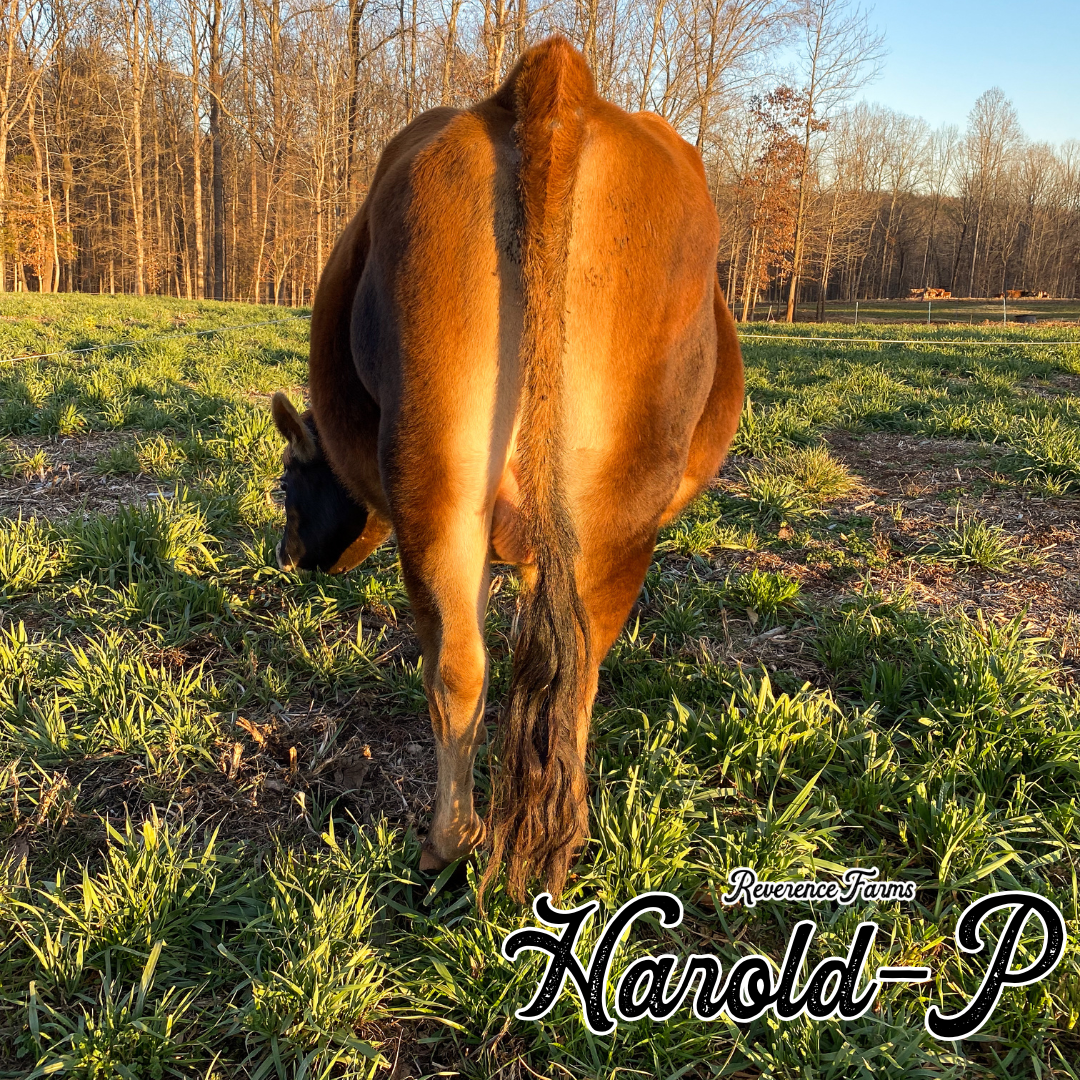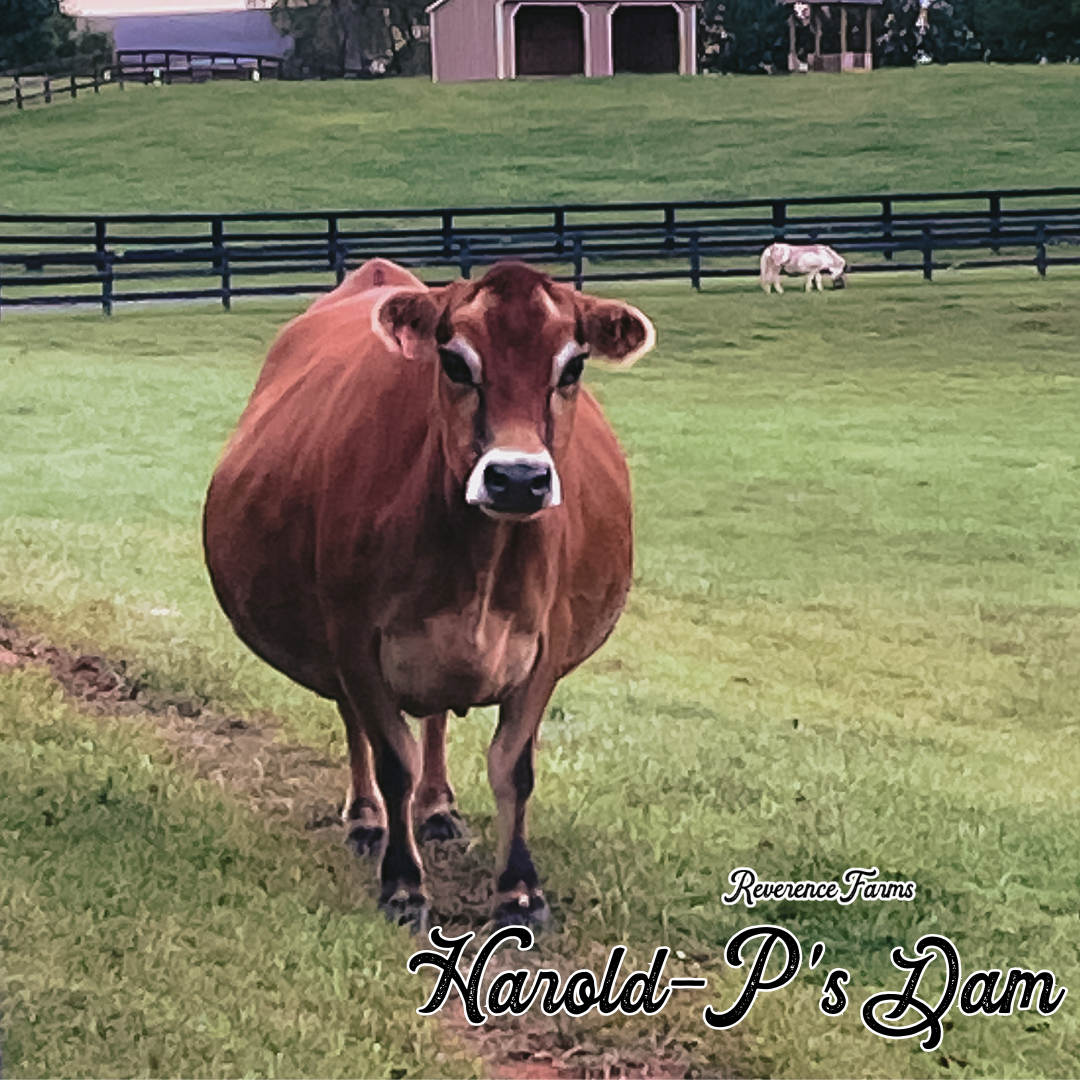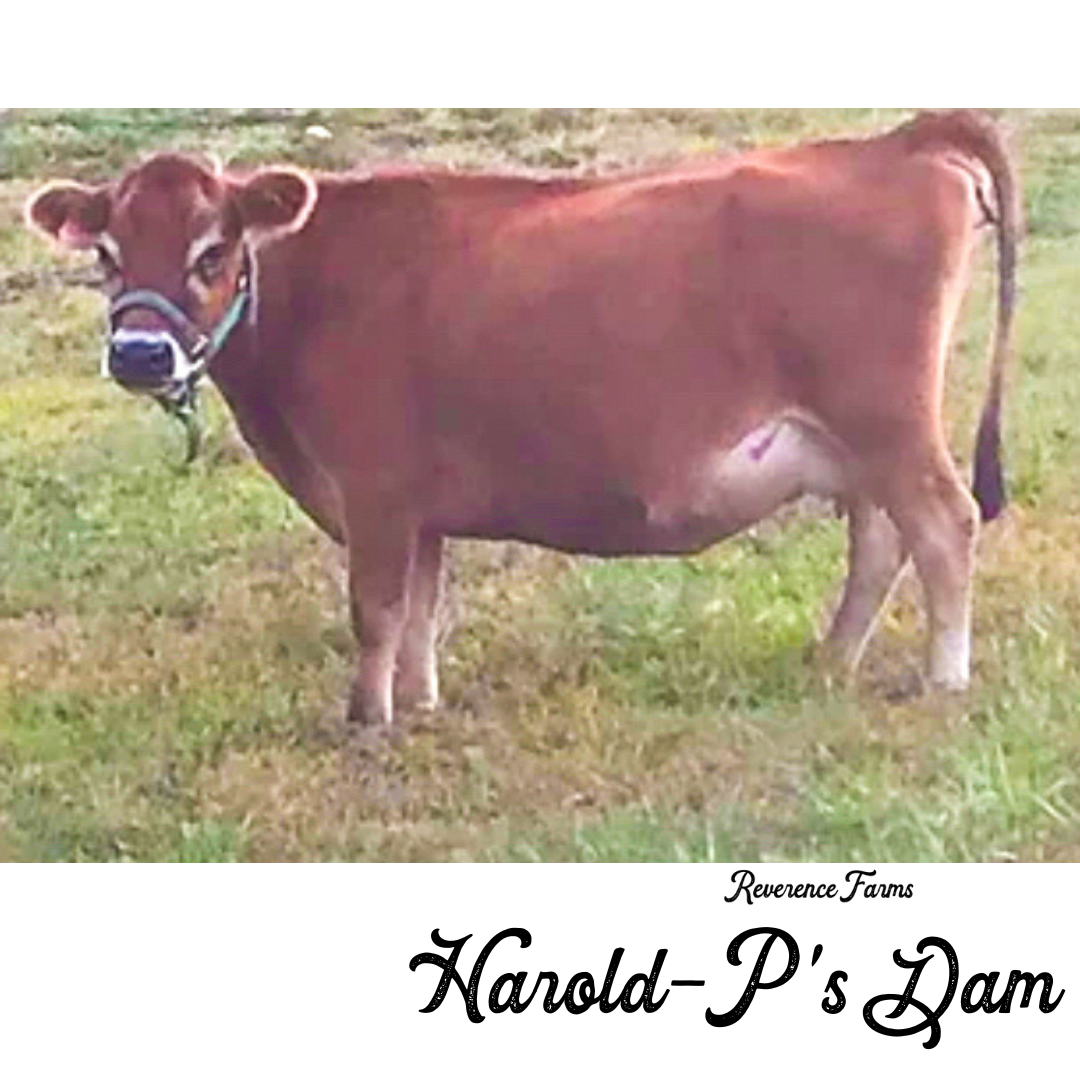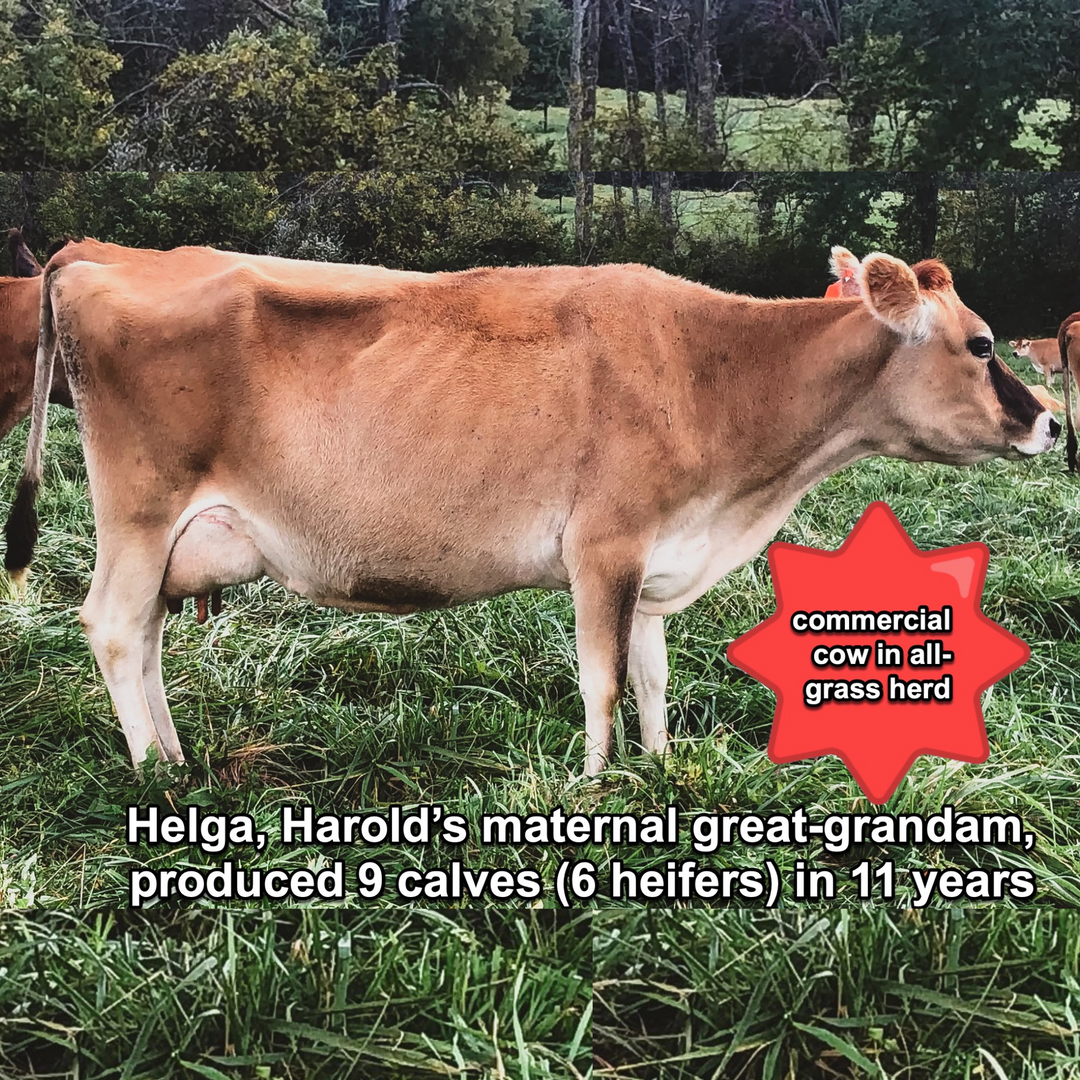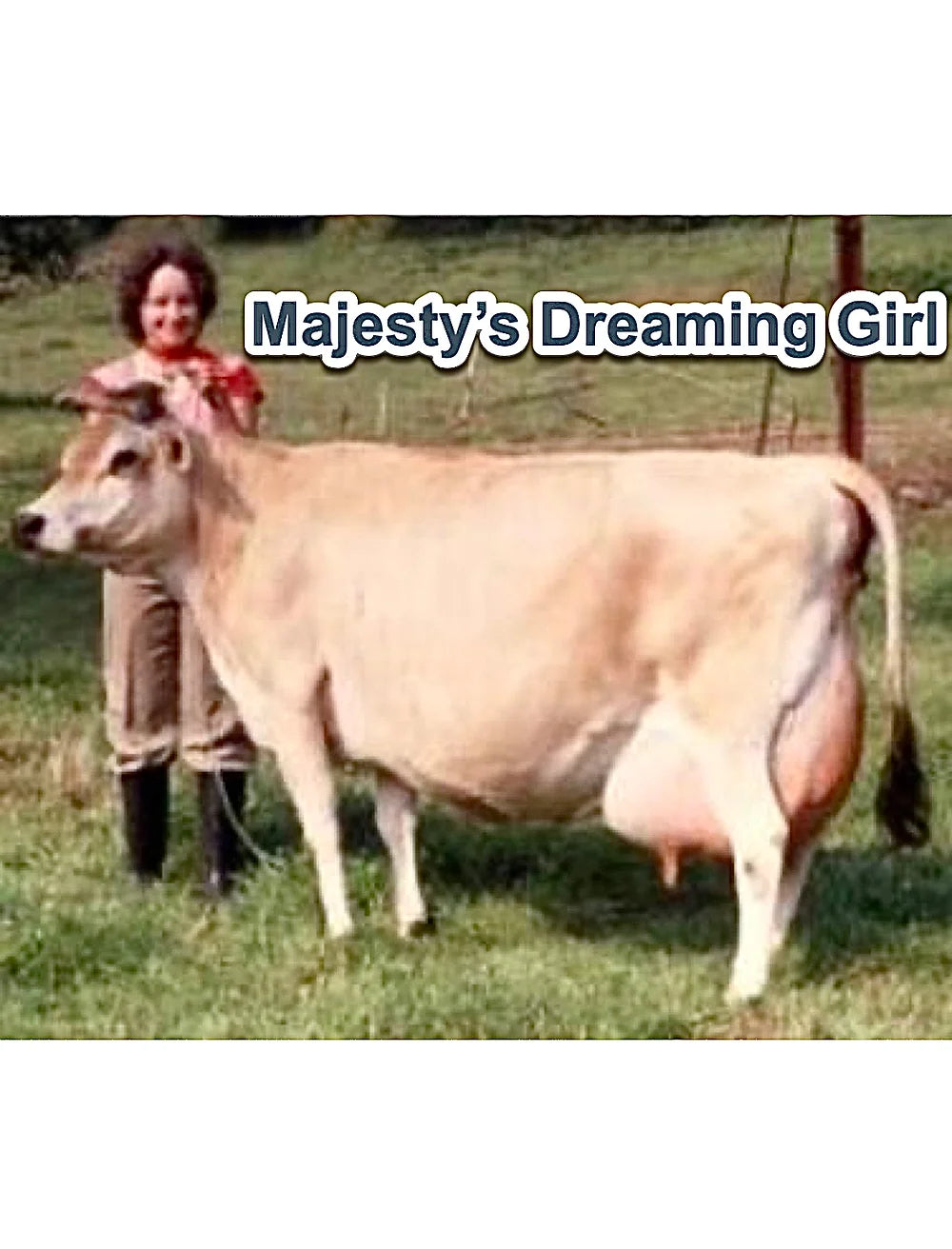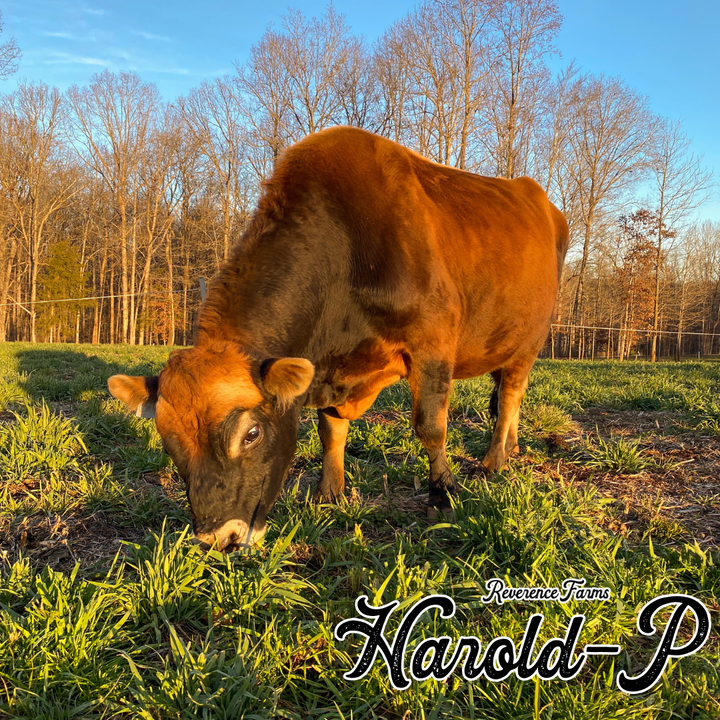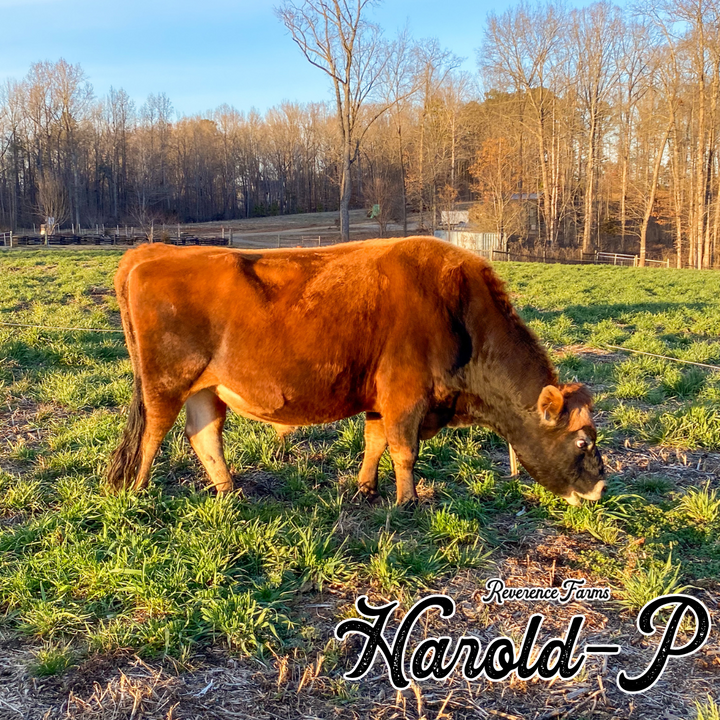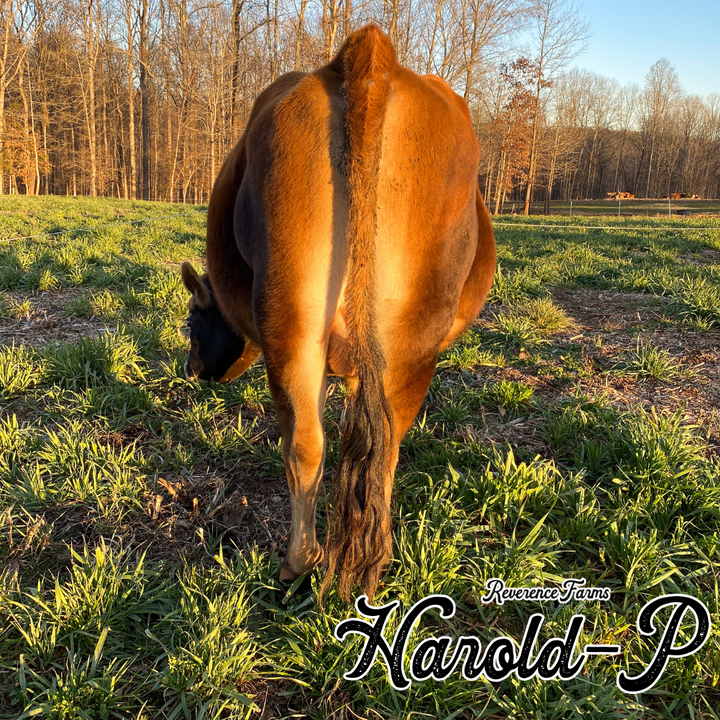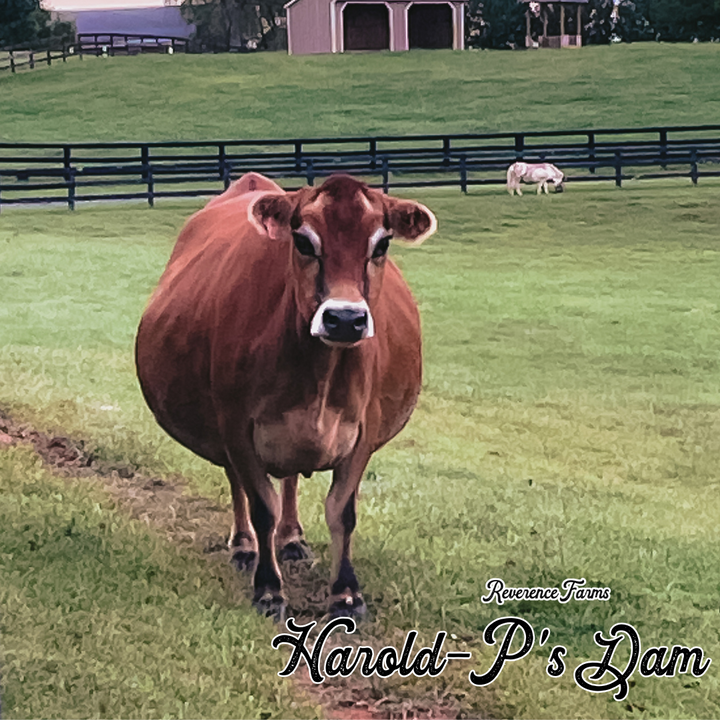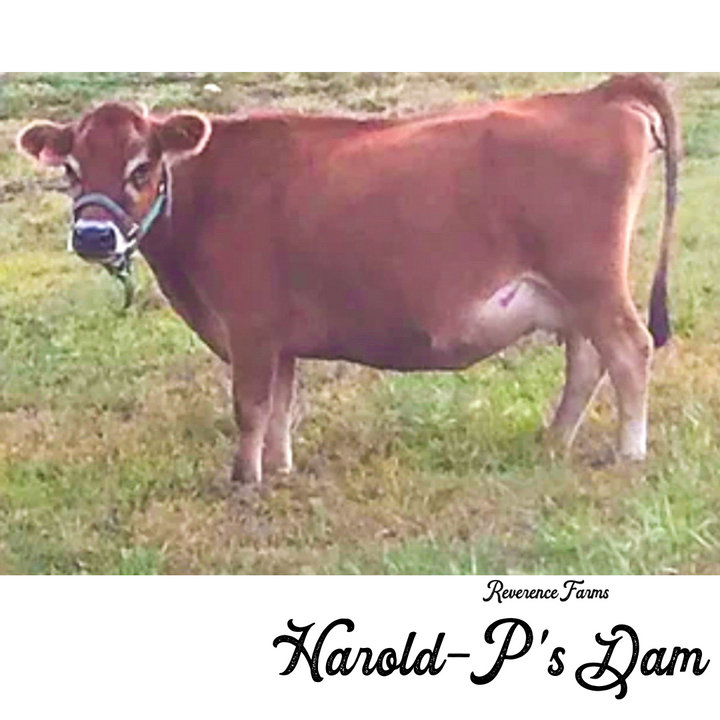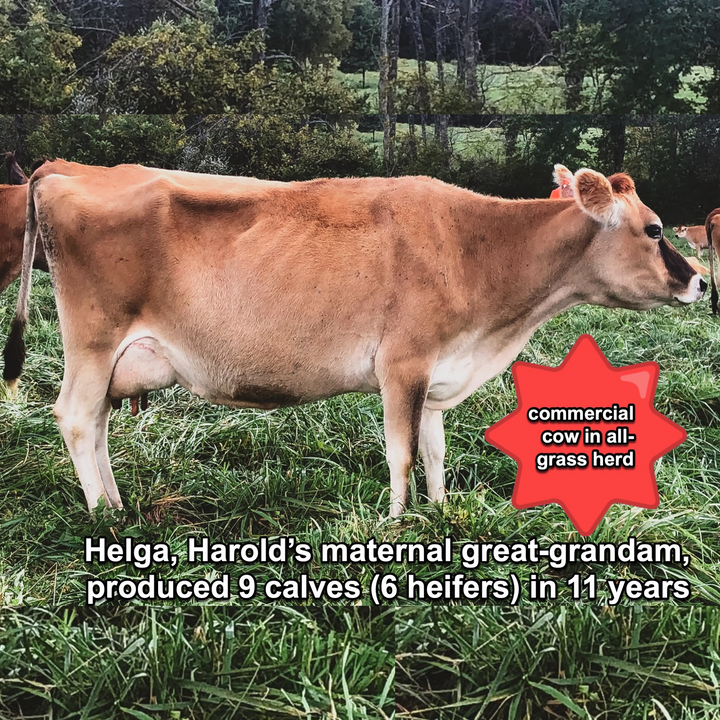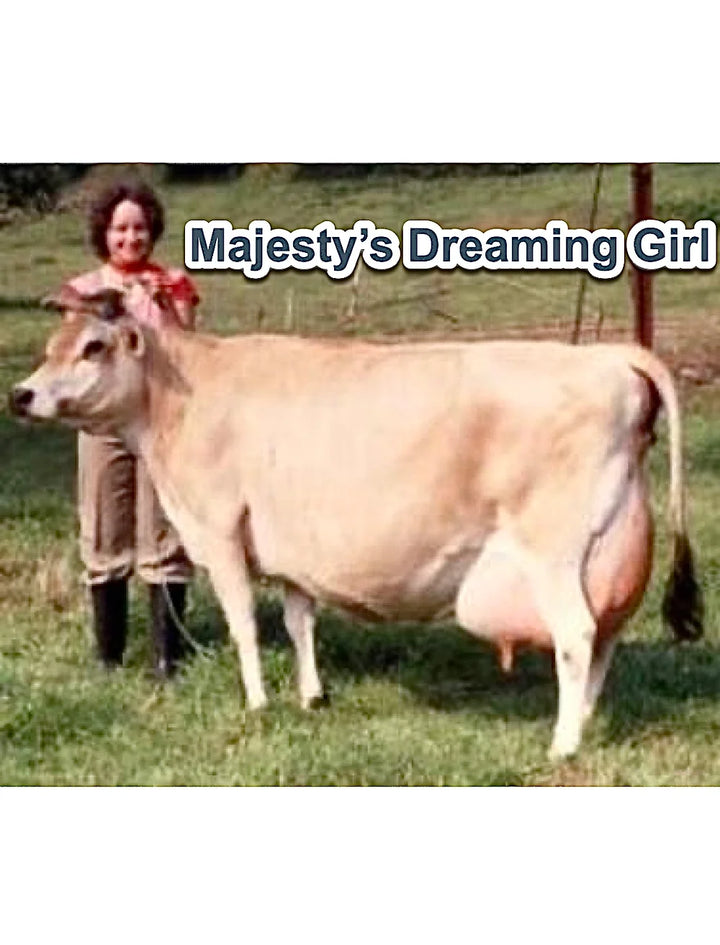Harold-P
UR Chestnut Oak Harold {0}-P
JEUSA000175052136 - BBR 92
Born: June 2020
aAa: 432 - A2A2 - BB/BB
Heterozygous Polled
43.5” tall at 3.5 years old
Strength – Reproduction — Udders
The vast majority of our bulls we breed and raise ourselves. I bought Harold from another farm with cow lines that I am well familiar with (they are closely related to the cows on our 60-cow farm) to solve a very specific problem in the smaller-framed Jersey world: lack of height, elasticity and functionality of the udder. Harold is a midsize bull and can safely be used on heifers and minis — as well as full-size Jerseys — because he has small calves. He is not a mini, however, even though he is small-framed. A smaller frame size is the single most important trait in grass-efficiency. Most of our cows would classify as “mid-size.”
Way too many mid-size and mini cows, and even conventional cows, have udders that lack suspension and wear out over time, or are attached way too low. But fixing it in the offspring can lead to other problems if the right bull isn’t selected. Many of the industry bulls that have good udders also produce really tall cows that are trainwrecks on a primarily forage diet. I was looking for a smaller-framed bull that had high and tight udders. Really, there are precious few. When I sent my mentor from Michigan to Maryland to check out Harold and he sent me his report, I knew we had what we were looking for.
Harold is an elegant bull overall — many small-framed lack elegance because they have been bred for a single trait: height. The dairy industry has found themselves with infertile cows because people single-trait selected for milk production. Single-trait selection for anything is a disaster for the whole critter, and height is no different.
Harold’s daughters will have higher, tighter, more well-suspended udders than their dams. How do I know this? Because I’ve studied how bulls transmit traits to their daughters for the past 15 years. And udder elasticity and attachment is related to the ratio of the leg length from the hip to the pastern and the pastern to the hip. Have you noticed that your cows with the shortest lower legs have the saggiest udders? That’s because these traits travel together genetically, so if we start selecting for shortness without paying attention to overall structure, we are going to get saggy udders. It seems sort of unjust in a way: cows with short legs also have udders that drag on the ground (sometimes literally) due to lack of suspensory ligaments and elasticity and lower attachment — so the very animals that can least afford to have saggy bags are the ones that already have short legs and udders that are attached lower on the animal. The inverse is also true, and this is why the dairy industry is now raising cows that look more like deer instead of cows — they have valued udder traits so highly that the rest of the animal has gotten out of balance, but their udders are “high and tight.”
Balance is KEY. Harold is a balanced bull, and not extreme in any way. We can sometimes fix problems with extremes in the other direction, but oftentimes this leads to other problems. We correct issues by choosing balanced bulls that lean in the direction of things we need yet are also prepotent enough to transfer these desirable traits to their offspring. Harold gets his prepotency from linebreeding — that means that his pedigree traces back several times to the same animal.
Linebreeding is bad news if the repeatedly selected animal is inferior. This is why inbreeding has gotten such a bad rap. All close breeding does is concentrate traits. It’s how every single breed was created — and in a sense we are creating a new sub-breed within the Jersey breed by going back to the old way of selecting animals to perform on a forage diet. If you concentrate sound animals in a pedigree, animals that have been life-tested for many years, you get a concentration of those genes, and that’s what constitutes prepotency in a bull: the ability to predictably pass those genes onto his daughters. All the beauty and structure and perfection you are after doesn’t matter if the bull just he has those traits. Or even if his mother had those traits. What matters is whether his daughters will have those traits!
Harold is linebred to a famous bull that comes from bloodlines directly from the Island of Jersey: Oakwood Keeping Designer. Oakwood Keeping Designer was himself linebred from three daughters of the herd’s foundation cow, Majesty’s Dreaming Girl. So even though the cow pictured here is Harold’s great-granddam four times removed, she is his great-granddam in that capacity three times, and on both sides of his pedigree. Linebreeding in this fashion is how predictability of outcome is established, and how all of the breeds of livestock were originally established.
Furthermore, other cows more close-up in Harold’s pedigree are out of animals that I am familiar with and respect the breeding program they come out of on a commercial 100% grass-fed dairy. We can’t just have smaller-framed cows and call it good. We need functional cows, and the way to really test functionality is in a commercial dairy setting. This bull was hand-selected by my mentor — someone who has been breeding commercial Jerseys for 50 years — and he helped me pick this bull out not because he’s a “nice” smaller-framed bull. My mentor’s standards are more straight-up functional than that. His standards are functional, period. He selected Harold as a “nice” bull, smaller-framed or not. That’s the kind of bull I’m willing to put on our cows.
*There is a minimum order of five conventional straws per cow. The shipping cost is significant & having extra is better than needing another shipment.
*For a $10 discount per straw, order ten or more straws of the same bull (discount will automatically be applied in your cart).
*There is no minimum for purchasing sexed straws. We recommend purchasing a minimum of three straws, whether conventional, sexed or a combination. If breeding multiple cows, you can round down somewhat because hopefully the law of averages means at least one of your cows settles on the first service, freeing up other straws for multiple services. You can use any additional straws next year.
**TO AVOID an extra charge of $150 for a complete nitrogen refill, you must return the tank within the 2 week timeframe stated in the return instructions.
***Tanks that are not returned are subject to a $1500 replacement fee.
****If you are local to Graham, North Carolina and would like to pick up on farm instead of having your order shipped, please first email bulls[at]reverencefarms.com to check availability and receive a custom invoice.


